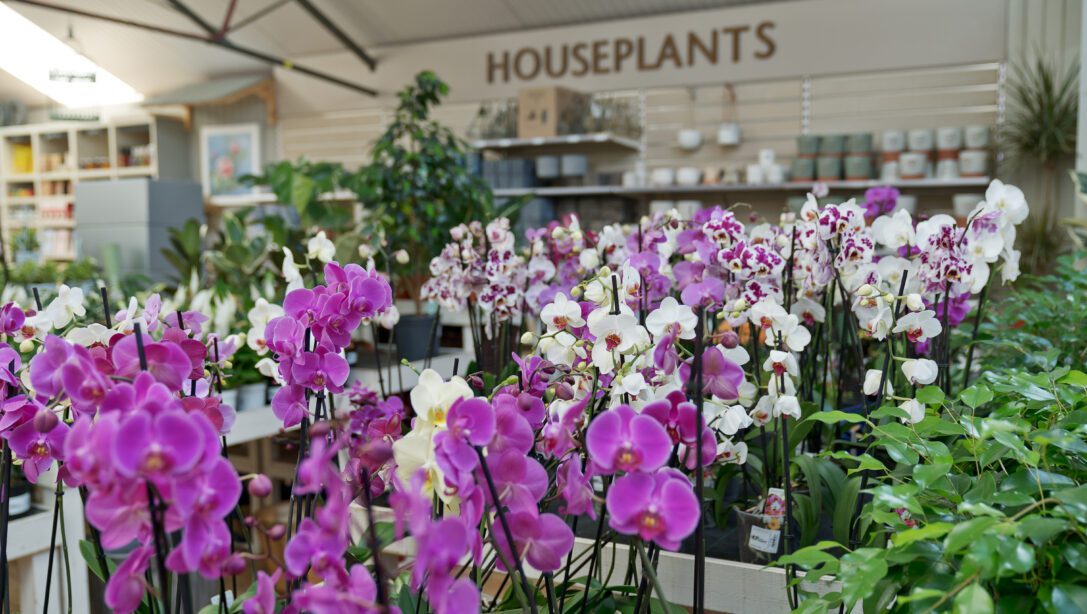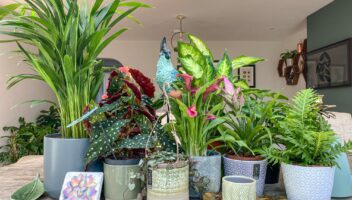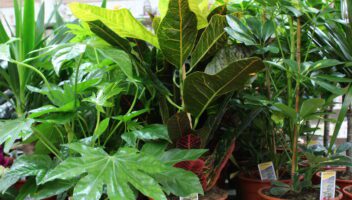The exceptional beauty and variety of orchids makes them a hugely popular houseplant, often given as a special gift. Orchids may be delicate in appearance, but they are also surprisingly hardy indoor plants. With tens of thousands of species available, below we highlight some of our favourites and how to care for yours.
Caring For Orchids
Orchids will reward you with striking blooms for a long time if you get a few simple things right.
Temperature
Most orchids are tropical plants and need a minimum night-time temperature of 15oC and daytime temperature between 20oC and 26oC. The difference between day and night temperature is important to get the best flowering.
Light
Orchids bloom best in well-lit areas, which are protected from direct sunlight. Placed behind a thin curtain or Venetian blind on the windowsill is ideal.
Humidity
Most orchids love a humid environment. Achieve this by misting the foliage and aerial roots once a day, or by placing the orchid on top of a bowl filled with decorative gravel and water to just below the gravel surface.
Watering
Orchids need to have moist, but not wet, roots. Water about once a week in the spring and summer and every 10-14 days in winter when the plant is more dormant. The best way to water your orchid is to plunge it, pot and all, into a bucket of tepid rainwater and then let it drain out completely.
Feeding
It is easy to over-fertilise orchids. Use a specifically designed orchid fertiliser and follow the instructions on the packet.
Repotting
Repotting an orchid provides a good opportunity to refresh the compost and tidy it up a bit. There is no specific time of year that is best for this and it is not always necessary if it seems the plant has outgrown the pot, as it is important not to ‘over-pot’ an orchid into too big a pot. This is because, when the roots are restricted a bit, it encourages flowering.
Orchid Varieties
Phalaenopsis (‘Moth Orchid’) 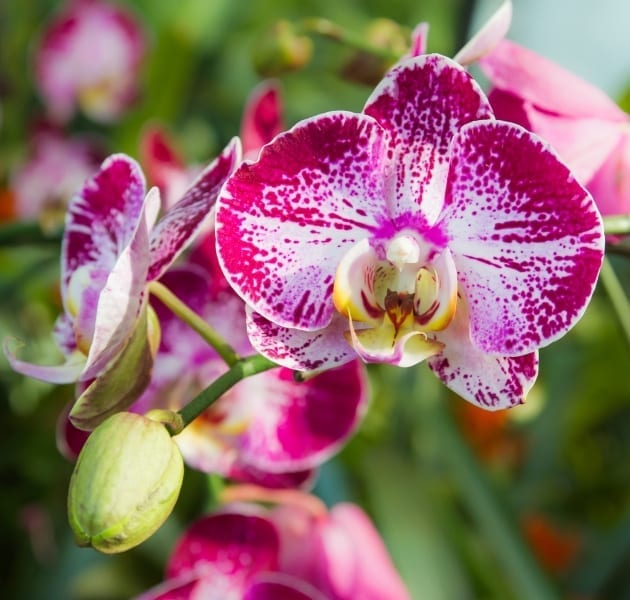
Origin – SE Asia
One of the most popular and well-known houseplants in the UK. Phalaenopsis means ‘like a moth’, derived from the Greek word ‘Phalaina’ (moth) and ‘opsis’ (resembling). There are small-flowered species, also known as multiflora, with a lot of small flowers; standard species and large-flowered species, also known as grandiflora, with flowers which are at least ten centimetres across. Phalaenopsis can be white, yellow, pink and purple and there are also species with unusually shaped and marked flowers.
Miltonia (‘Pansy Orchid’)
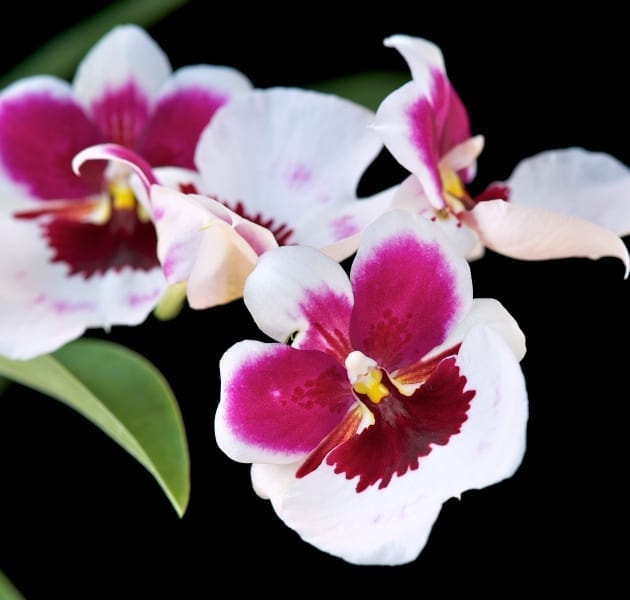
Origin – Forests of Brazil
There are hundreds of species of Miltonia, which vary greatly in terms of shape and size. It is typically the large-flowered varieties that are grown commercially, which are often brilliantly patterned. Miltonia is easy to grow. It needs a light spot, but cannot tolerate direct sunlight.
Cymbidium (‘Boat Orchid’)
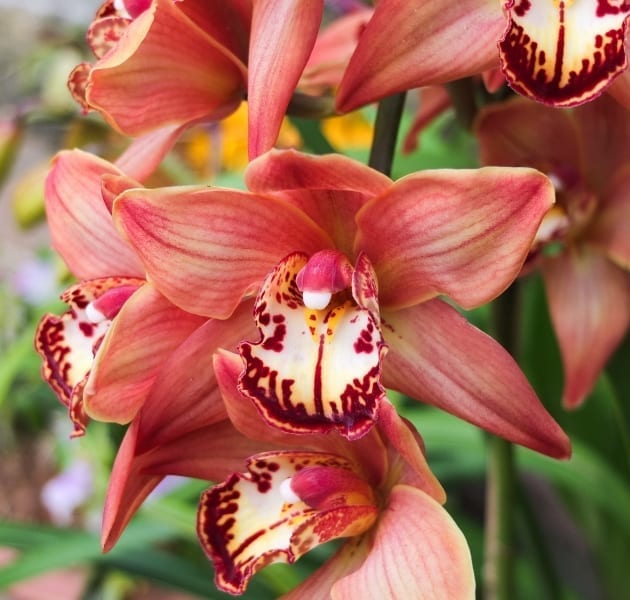
Origin – East and SE Asia
Most of the ancestors of today’s cymbidiums originated from the forests of the Himalayas at a height of between 1,200 and 2,800 metres. Potted cymbidiums have long, narrow leaves and the flowers have a colour spectrum that includes white, yellow, green, pink, red and brown. Cymbidiums do well with cooler night temperatures (down to 10oC).
Cattleya
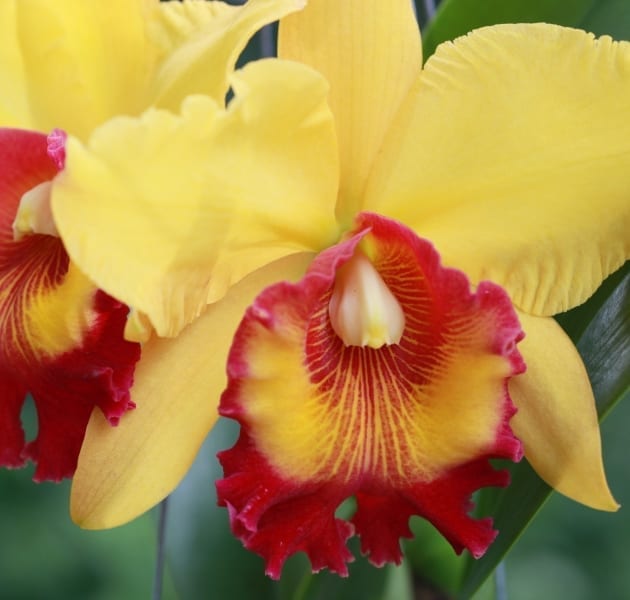
Origin – Central America and northern parts of South America
The Cattleya is the national flower of a number of South American countries, including Colombia. The plants are epiphytes, which means they grow on trees in the wild. Of all the orchids, the Cattleya has the most varied forms. The large flowers have a conspicuous frilly lip.
Masdevallia
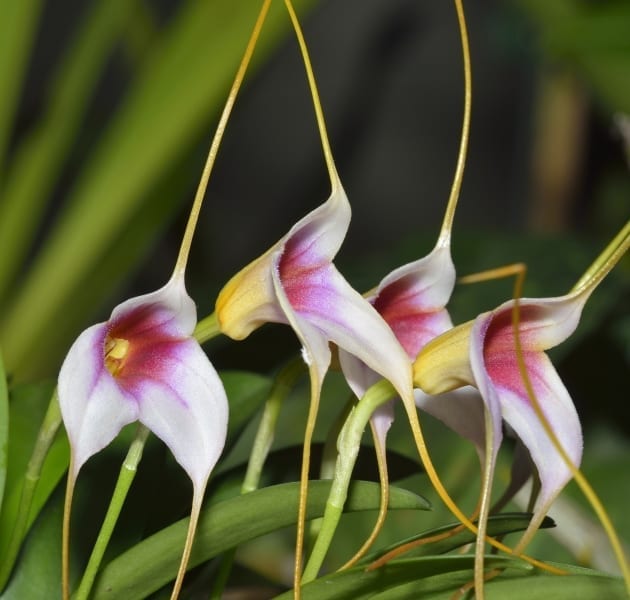
Origin – From Mexico to the southern tip of South America
Masdevallia can be found in a wide array of colours and patterns. The striking, three-petalled flowers have elongated tips.
Brassia (‘Spider Orchid)

Origin – Caribbean islands and Central America
Unusual, narrow-petalled ‘spidery’ flowers, often with mottled colourings.
Cambria

Origin – A hybrid breed
Cambria is a collective name for a group of hybrid orchids bred by humans and not existing in the wild. The ‘parent plants’ are many different kinds of orchid from all over the world. Cambrias have some of the showiest flowers of any orchid.
Ludisia (‘Jewel Orchid’)
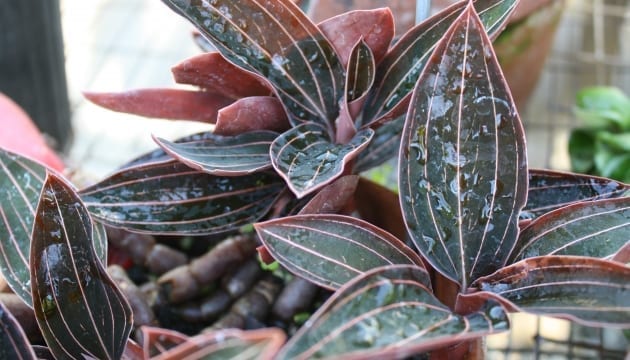
Origin – Vietnam, Burma and Thailand
The best orchid for foliage. Needs more shade than other varieties.
Oncidium (‘Dancing Lady Orchid’)
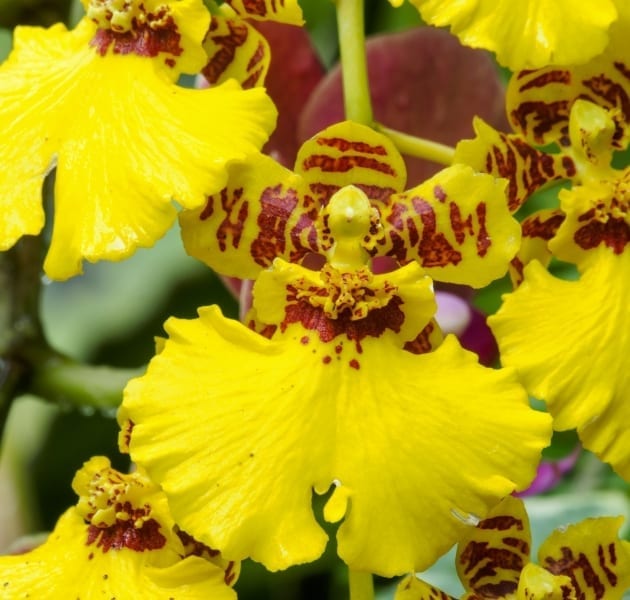
Origin – Central and South America and the West Indies
Oncidium orchids have large-lipped flowers which are often frilled or ruffled. Oncidiums are mainly yellow and russet but are also available in other colours ranging from white to shades of brown.
Paphiopedilum (‘Venus Slipper Orchid’)
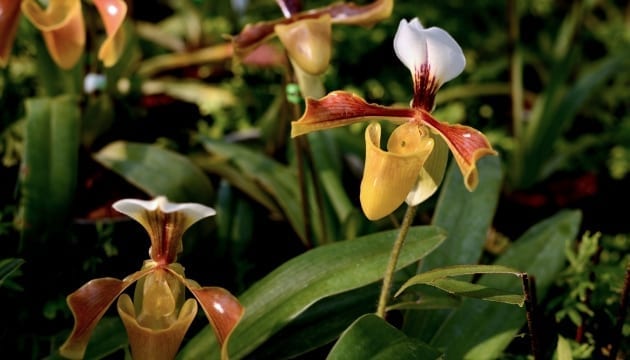 Origin – India, China and SE Asia
Origin – India, China and SE Asia
These unique orchids, which are a genus of the ‘Lady Slipper’ orchid subfamily, have a lower petal that forms an unusual ‘pouch’ to trap insects feeding on the nectar.
Vanda

Origin – East and SE Asia
The Vanda is an orchid which is widespread in nature, from India and Sri Lanka to Northern Australia. One of the rarer orchid varieties, it is probably the most amazing of all the orchids for colour and fragrance. Vanda grows best in a light spot in a glass vase. The plant needs as much light as possible, but no direct sunlight in the summer.
Visit your nearest Hillier Garden Centre to view our selection of orchids. Please be aware that all varieties are subject to availability, which may vary throughout the year.


